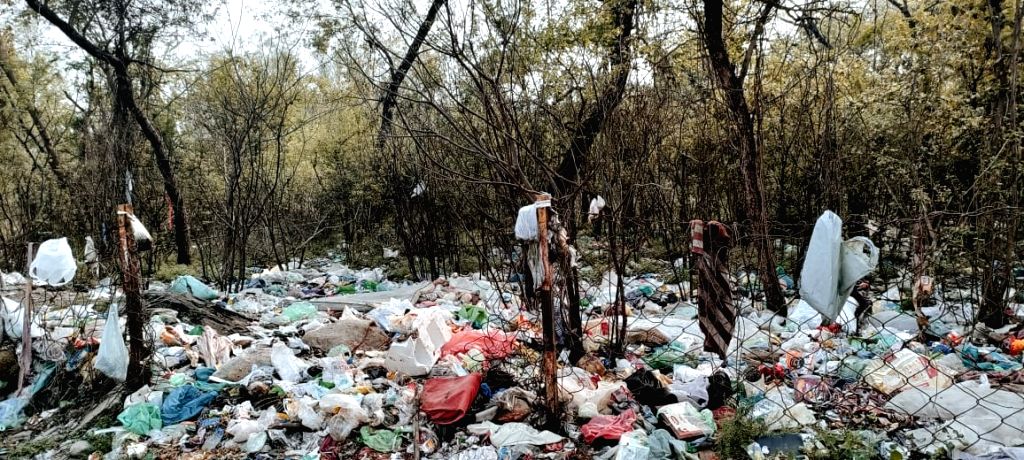Description
Introduction to Ban Village
Situated in the Jammu tehsil, Ban village exemplifies rural simplicity and the preservation of traditional lifestyles. Located approximately 25 kilometers from Jammu city, the village spans an area of 1,055.8 hectares. According to the 2011 Census, Ban village has a population of 1,014, highlighting a blend of opportunities and challenges that mirror broader rural realities in Jammu & Kashmir.
Demographics
-
Population and Composition: Ban village is home to 1,014 residents, comprising 543 males and 471 females. The male-to-female ratio indicates a relatively balanced demographic structure.
-
Literacy: The village has a literacy rate of 62.92%. However, gender disparities persist, with male literacy at 69.80% compared to 54.99% for females. This calls for targeted educational interventions to bridge the gap.
-
Households: There are 181 households in Ban, with an average family size of 5-6 members. Resource sharing and a communal living ethos are key aspects of the village’s social structure.
Administrative Framework
Ban village falls under the jurisdiction of the Gharota Lower gram panchayat and is headed by a sarpanch. Politically, it is part of the Raipur Domana Vidhan Sabha constituency and the Jammu Lok Sabha constituency. While local elections provide a platform for residents to voice their concerns, limited resources hinder effective implementation of developmental policies.
Infrastructure and Services
-
Road Connectivity and Transport: Despite being connected to neighboring areas via a network of roads, the quality of these roads remains poor. Public and private buses operate within a 10-kilometer radius, but transportation options are limited. Monsoon rains exacerbate the poor road conditions, restricting economic activities and access to essential services.
-
Electricity Supply: The village has electricity, but frequent power outages disrupt daily life, particularly for students, small businesses, and households reliant on electrical appliances.
-
Water Resources: Water scarcity is a pressing issue, especially during summer months. Existing water sources are inadequate to meet the growing demands of the population. Implementing water management solutions like rainwater harvesting could alleviate this problem.
-
Healthcare: The absence of healthcare facilities compels residents to travel to Jammu city for medical needs. This lack of local healthcare infrastructure increases vulnerability during emergencies, underscoring the need for a health sub-center or mobile health services.
Economic and Social Factors
-
Agriculture: Farming is the primary occupation, but outdated irrigation methods, a lack of modern tools, and unpredictable weather conditions hinder productivity. These challenges contribute to unstable income levels for farmers.
-
Employment: Limited local employment opportunities force many residents to migrate to cities for work. This seasonal migration disrupts family structures, leaving an aging population to manage the village’s daily affairs.
-
Educational Infrastructure: While basic education facilities are available, the absence of secondary and higher educational institutions forces students to travel long distances. Financial and logistical barriers often lead to high dropout rates.
-
Cultural Practices: Ban village boasts a rich cultural heritage, with residents actively participating in traditional festivals and community activities. These practices foster social cohesion but require preservation amid rapid modernization.
Neighboring Villages
Ban shares borders with villages such as Panjoa, Jagti, Saroinsar, Chilah, Tahra, and Janakh. These neighboring communities face similar challenges, making regional cooperation essential for addressing issues like infrastructure and resource management.
Developmental Challenges
-
Roads and Transportation: Inadequate road infrastructure hampers connectivity, increasing transportation costs and isolating the village from economic centers.
-
Healthcare Gaps: The lack of local medical facilities makes healthcare access both time-consuming and expensive, disproportionately affecting vulnerable groups such as the elderly and children.
-
Water Management: Inadequate water supply during peak agricultural and summer seasons necessitates urgent implementation of sustainable solutions.
-
Education Barriers: The absence of secondary and higher educational facilities deprives local youth of opportunities, leading to skill loss and increased migration.
-
Agricultural Productivity: Dependence on traditional farming methods, coupled with a lack of technological support, results in low agricultural yields and economic hardships.
Opportunities for Development
-
Infrastructure Investment: Improving road connectivity and transportation systems could enhance accessibility and economic opportunities for Ban village.
-
Health Programs: Introducing mobile health units or telemedicine services can address the healthcare gap effectively.
-
Academic Programs: Scholarships, mid-day meals, and transportation facilities for students could improve school attendance and reduce dropout rates.
-
Water Conservation: Rainwater harvesting, borewell installation, and community water tanks could mitigate the water scarcity issue.
-
Agricultural Modernization: Providing training on modern farming practices and offering subsidies for irrigation and machinery could boost agricultural productivity and income.
Conclusion
Ban village is a testament to the resilience of rural life, blending cultural richness with familial bonds. However, its growth is constrained by infrastructural and resource limitations. Addressing challenges in healthcare, education, water management, and agriculture through targeted interventions can unlock thevillage’s potential. Strategic investments and community engagement are key to transforming Ban into a model of rural development in Jammu & Kashmir.
Photos
Videos
Location Map
Contact Information
| Address |
Jammu tehsil of district Jammu |
| Phone Number |
9419159012 |
| Website | https://www.mapsofindia.com/villages/jammu-and-kashmir/jammu/jammu/ban.html |
Reviews (1)


























The documentary tells about the village a lot, nice work.